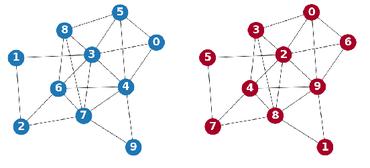An Empirical Study of the Expressiveness of Graph Kernels and Graph Neural Networks
Graph neural networks and graph kernels have achieved great success in solving machine learning problems on graphs. Recently, there has been considerable interest in determining the expressive power mainly of graph neural networks and of graph kernels, to a lesser extent. Most studies have focused on the ability of these approaches to distinguish non-isomorphic graphs or to identify specific graph properties. However, there is often a need for algorithms whose produced graph representations can accurately capture similarity/distance of graphs. This paper studies the expressive power of graph neural networks and graph kernels from an empirical perspective. Specifically, we compare the graph representations and similarities produced by these algorithms against those generated by a well-accepted, but intractable graph similarity function. We also investigate the impact of node attributes on the performance of the different models and kernels. Our results reveal interesting findings. For instance, we find that theoretically more powerful models do not necessarily yield higher-quality representations, while graph kernels are shown to be very competitive with graph neural networks.
PDF Abstract
